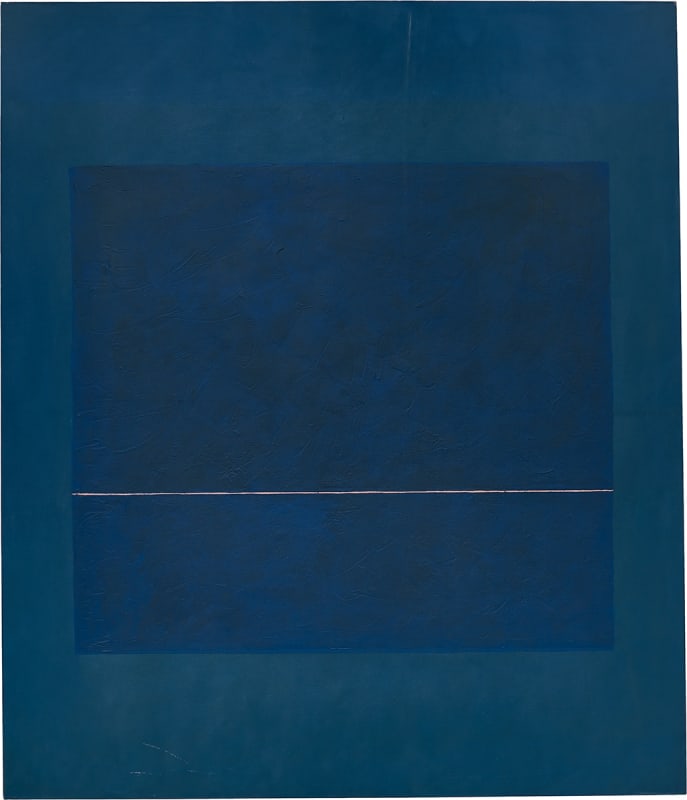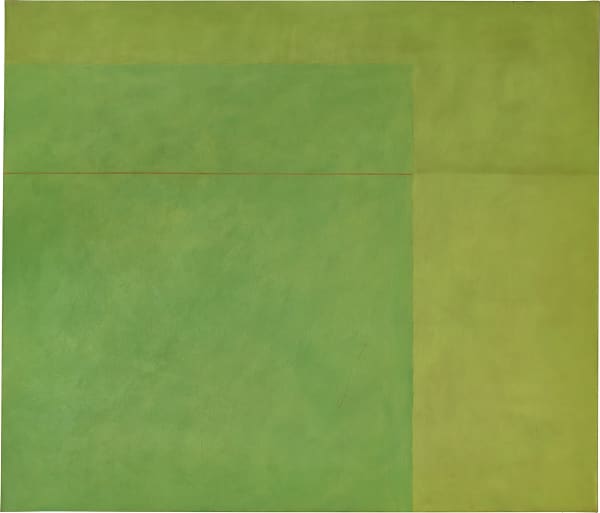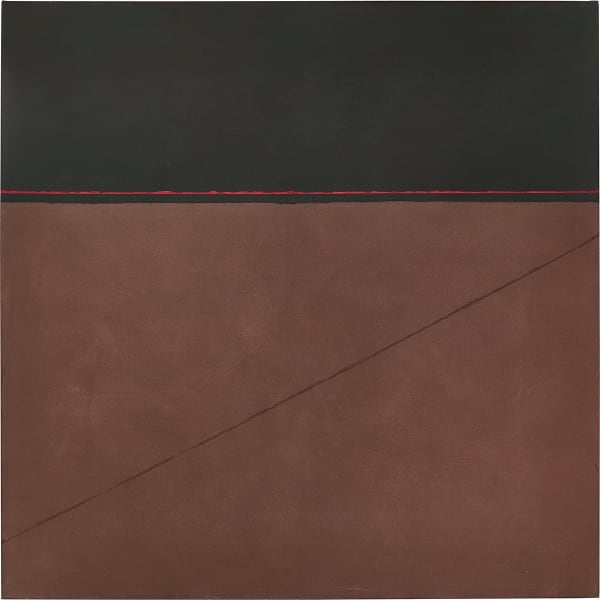Virginia Jaramillo : Where the Heavens Touch the Earth
Hales Gallery is delighted to announce Virginia Jaramillo: Where the Heavens Touch the Earth. Taking place at Hales London, this will be Jaramillo’s debut exhibition with the gallery, and her first solo exhibition outside the United States. The exhibition brings together works by Jaramillo from the early 1970s and the end of the decade.
Born in El Paso, Texas, Jaramillo spent her formative years in California before spending a year in Europe and settling in New York in the late 1960s. It was in the first year of her studies at the Otis Art Institute in Los Angeles in 1959 that the 18 year-old Jaramillo’s work was selected for inclusion in LACMA’s prestigious Annual Exhibition. Central to a career spanning nearly six decades is Jaramillo’s drive to express materially our sensory perceptions of space and time. As Jaramillo states:
My work is an aesthetic investigation which seeks to translate into visual terms the mental structural patterns we all superimpose on our world—the framework of reference points we use to distinguish the ‘real’ from the ‘unreal’.
Artist statement for the series Visual Theorems, 1981
The frameworks of reference explored in Jaramillo’s work are inspired by a diverse range of experiences and influences, spanning history and crossing cultures. These include contemporary fields such as science fiction and modernist industrial design (during high school, Jaramillo and a selected group of other students would make weekly visits to the celebrated designer Charles Eames’s studio) as well as Celtic and Greek mythologies, pre-Hispanic and non-Western systems of spatial organisation, and classical and sacred geometry. Each of these sources represents ‘structural patterns’ conceived by individuals and societies in order to organise our sensed experiences of the physical, spiritual and mental worlds. From bold abstract canvases and sculptural mixed media compositions to meticulously formed pulp paintings, Jaramillo has forged a unique voice, experimenting with material and process to pursue her ongoing explorations of human perception of reality.
This exhibition focuses on works created in New York between the early 1970s and the end of the decade, bringing together a selection of large-scale canvases and the Visual Theorems, a series of works made from natural linen fibres and earth pigments, embarked on in 1979. Crossing boundaries between traditionally separate categories—painting and drawing, canvas and paper—the artworks on display are united by an ongoing conceptual mission and formal echoes in their underlying geometry, as well as the tangible materiality of their layered compositions. Straight lines, intersecting arcs and blocked out forms, traced with mathematical precision, organise fields of deep colour. The resulting visual, concrete forms reflect and embody these processes by which we seek to organise our sensory experiences of space.
Living and working on Spring Street in New York's Soho and involved in the burgeoning and dynamic arts scene, Jaramillo’s work evolved in response to the environment of bold creative experimentation, particularly in the field of abstraction. In her works of the early 1970s, thin washes of oil paint are poured onto the canvas, creating richly stained surfaces structured by the geometry of painted lines. This balanced process—combining improvisation and planning, freedom and structure, colour and form—finds echoes in the very different materials Jaramillo began experimenting with in 1979. The groundbreaking Visual Theorems signalled a creative breakthrough for the artist. Working with natural linen fibres, earth pigments and watermarking processes, Jaramillo began to develop a method whereby the geometric forms and colours used in her canvas paintings could be embedded within the work’s surface. Geometric lines taped on paper-making moulds would be used to draw and structure multiple ‘veils’ of coloured pulp thrown onto the moulds’ raised surfaces. Once more, layers of colour accumulate, counterbalanced always by an underlying geometry.
This geometry relates to the title of the series. In mathematics, a visual theorem is a graphical form used to help us understand mathematical or real world situations. The Visual Theorems therefore powerfully express Jaramillo’s central preoccupation with the interaction between reality, perception and expression. Works from this series were shown in a number of important exhibitions and publications, including the legendary feminist journal Heresies (1979 and 1982) and A.I.R. Gallery (1984), and are held in museum collections including the Museo Tamayo, Mexico City and Spencer Museum of Art at the University of Kansas. Other handmade pulp works are in the collections of the Kemper Museum of Contemporary Art, Kansas City and the Metropolitan Museum of Art, New York.
From canvas to paper, Jaramillo’s material experiments with concretising perception place her work in an ancient lineage. It follows in the footsteps of pre-Hispanic cultures which would seek to express their religious beliefs in the architecture of their cities or the construction of complex earthwork mounds. The exhibition’s title, Where The Heavens Touch the Earth, is drawn from the name given to Teotihuacan, an ancient city in Mexico which followed this tradition, constructing an urban architecture representing the cosmological view of its citizens. In Jaramillo’s work, however, multiple cosmologies co-exist, from ancient myths in Greek, Celtic and non-Western cultures to the mathematical systems of classical geometry.
Virginia Jaramillo: Where the Heavens Touch the Earth precedes two major exhibitions in summer 2017 featuring Jaramillo’s work: We Wanted a Revolution: Black Radical Women 1965–85 at Brooklyn Museum, New York and Soul of a Nation: Art in the Age of Black Power at Tate Modern, London.















